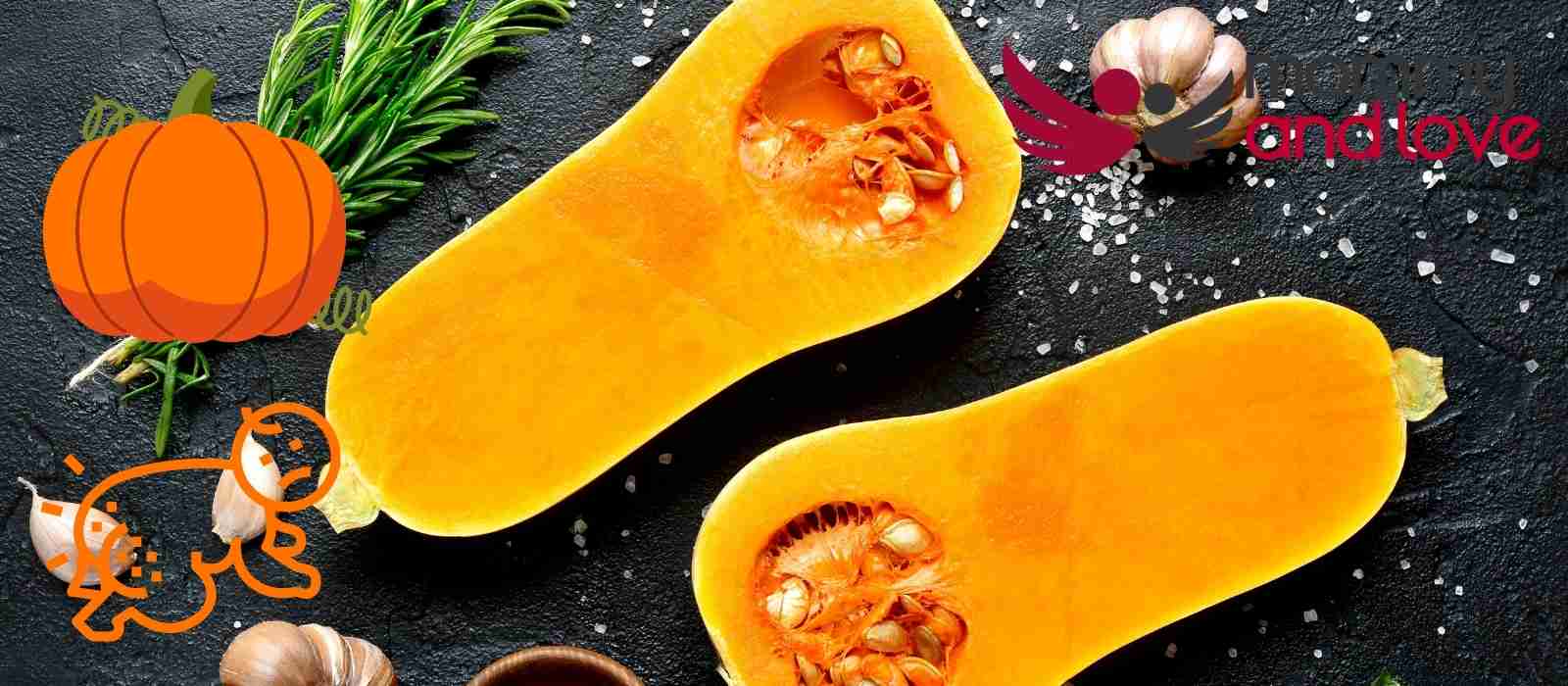If your baby has a diaper rash, you might be making changes to your diet in an attempt to see if any of those will clear it up. There are numerous websites and forums that claim squash can cause diaper rash. However, there are a few things that you need to know before you make this assumption.
Is squash healthy for babies?
Squash is high in fiber and contains a lot of vitamin A for eyesight, B vitamins for healthy blood, C vitamins for tough skin, and E vitamins for brain health and development. Squash seeds have more vitamin E than squash flesh!
While all of these vitamins benefit your baby’s immune system, vitamin C has a unique benefit. It aids iron absorption from plant-based diets high in essential nutrients. As a result, combining squash with iron-rich foods like beans, lentils, nuts, and seeds might provide an extra nutritious boost.
Furthermore, squash is high in carotenoids, which are plant components that human bodies convert to vitamin A. In fact, the more carotenoid squash produces after curing, the longer it is allowed to cure. According to research, carotenoids may help lessen the risk of cancer and manage free radicals that our bodies produce naturally.
When can babies eat squash?
When your baby is ready for solid meals, which is usually around 4 to 6 months, he or she can try squash. Most pediatricians recommend exposing your infant to a wide range of flavors and textures as they begin their solids adventure. Your baby should still be getting most of his nutrition from breast milk or formula.
Squash, particularly butternut squash, is high in vitamin A, potassium, and fiber. As a result, they are an excellent and nutritious meal to include in your baby’s new diet.
New foods such as squash should be added to your baby’s diet in small amounts, gradually increasing the quantity if she does not show any symptoms of a negative reaction.
You should start eliminating certain foods from the diet of your baby. Any particular food that is causing a diaper rash should be reintroduced at a later date when your baby is old enough and her stomach can handle such foods.
Many parents are advised to consult a medical professional or your doctor before reintroducing these foods to your baby’s diet.
How to cook butternut squash for a baby
For newborns and early toddlers, squash can be steamed, baked, or roasted. Simply cook the squash until it is very mushy – if you can easily mash it between your fingers, your mini muncher will be able to break it down with her gums or coming teeth.
Before cooking, remove the tough outer peel as well as any stringy or fibrous parts. Both can be difficult for new diners to handle and may provide a choking hazard.
Is it possible for babies to be allergic to squash?
Squash allergies aren’t very prevalent. Even so, it’s always a good idea to be on the lookout for indicators of a potential reaction, especially if you’re serving it for the first time.
To decrease the risk of a baby food allergy, your baby’s digestive system must be mature enough to handle these foods. Follow the four-day rule when introducing new foods. Which foods tend to give your baby a diaper rash will be obvious to you right away! Don’t introduce a lot of new foods at once to your baby. The reaction may be milder as a result.
Babies who are suffering from persistent diaper rash should not be given foods they are allergic to. This includes other foods you think your baby might react to.
Certain foods such as those that are considered acidic foods and citrus fruits should be at the top of the list because they primarily cause diaper rash. Other foods that might cause an allergic reaction are those from tree nuts and dairy products.
Does squash cause diaper rashes?
If a baby is allergic to squash, she will most likely get a diaper rash. Hives, eczema, swelling in the face or lips, tingling in the mouth, coughing, fainting, and indigestion are all common signs of a food allergy.
If your baby is allergic to squash, the diaper rash should appear within minutes. However, they might appear hours later after eating the squash so be on the lookout. Other symptoms might appear as well such as loose stools, inflamed skin, bright red skin rash and diarrhea.
When a diaper rash appears in the diaper area after eating squash, treat it right away before it becomes worse. It usually goes away on its own and should not take weeks to heal.
Frequent diaper changes as well as applying a diaper rash cream that contains zinc oxide onto the diaper rash site should help relieve symptoms. Watch out for other signs of rashes and keep in mind that diaper rash can get worse if you do not contain it.
Conclusion
Squash is healthy food for little children and can be cooked in many different ways. It is high in vitamins A, B, C, and E as well as carotenoids which may help lessen the risk of cancer. When your baby is ready for solid foods, squash can be a great addition to their diet. However, if your baby is allergic to squash they might get a diaper rash.
Talk to your doctor if squash is giving your little one a diaper rash. Your little one should not eat citrus fruits, acidic foods, and squash if they are causing a rash.
Can squash cause a diaper rash and other food sensitivities? Learn how to tell if your little one is allergic to squash and avoid this common food allergy.
Early indications of food allergy are hives and/or diarrhea. Sometimes eczema, rash, swelling, or fainting will develop. If a baby is allergic to squash, she is also more likely to be allergic to carrots, cucumber, tomatoes, pear, banana, pineapple, oranges and other raw citrus fruits and vegetables.




